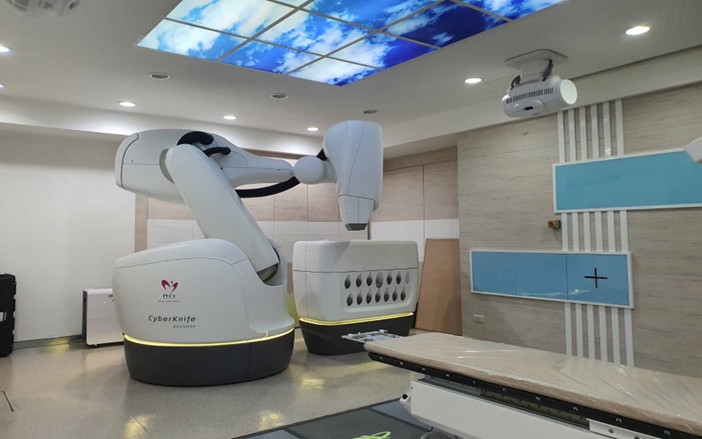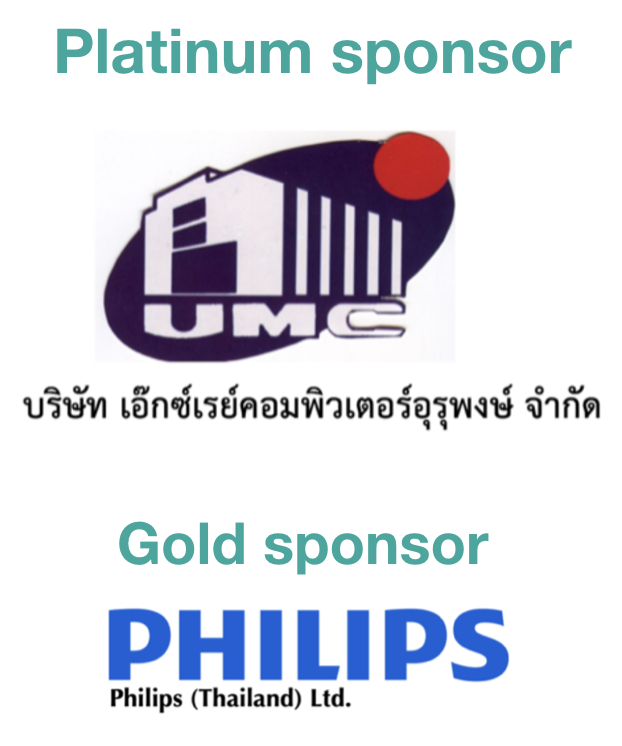Analysis and assessing of radiotherapy service at the National Cancer Institute: productivity, infrastructure, and facilities
Keywords:
Radiotherapy Service, Productivity, Infrastructure, FacilityAbstract
Background: Cancer is a major public health problem in Thailand, and the incidence tended to be increased. Radiation therapy play an important and necessary role in treatment of both early and late-stage cancer patients. At present, in Thailand, there is no clear study and analysis of the radiation therapy work system in terms of services and infrastructures. Objective: This study aimed to analysis and evaluation of radiotherapy services of the National Cancer Institute both the statistics of cancer patients who received the service and infrastructure. Methods: The study was a retrospective data collection and description statistic. Data were collected from all radiotherapy clients and infrastructure for the past 3 years and collected from the population and hospital cancer registry reports for the past 10 years Results: The National Cancer Institute found a 60 percent decrease in new patients, but an 11 percent decrease in new cancer patients, females more than males, and more than 70 percent from Bangkok and nearby areas receiving chemotherapy. The most therapies found the most breast cancer. There were 4 specific and different systems of irradiation machine and TPS system and OIS system. Irradiated patients are reduced by 14.37%. Irradiation service is provided by technique 3 DCRT and the highest service value is 50.58%. The irradiator of Cyber Knife had the highest maintenance cost equal to 307.95 percent of the service value. The number of radiotherapy personnel meets the specified criteria. where medical physicists have high turnover rate. Conclusion: The new cancer patients found a slight decrease and the most common breast cancer. There were 4 types of irradiators and TPS and OIS system. The four different specificity systems were the limitations of radiation techniques and number of personnel as well as expertise development. Most breast cancer patients were irradiated. Therefore, it was imperative to provide a suitable kit to check the irradiation positioning to increase efficiency. It had been found that irradiation with more advanced techniques increases. But there was still a high proportion of maintenance costs of the irradiator and tends to increase with age and deterioration. It was necessary to procure or replace the obsolete, low-power, long-lived system to increase the quality/number of patients/reduce the waiting time/increase the cost of radiation charges and different types of cancer in each area and the availability of radiotherapy systems, TPS, OIS, the potential of personnel, as well as the efficiency in reimbursement of radiation fees from various funds in order to continue to treat cancer patients with effective, quality and cost-effective radiation.
Downloads
References
ประกาศสำนักงานหลักประกันสุขภาพแห่งชาติเรื่อง เกณฑ์การตรวจประเมินเพื่อขึ้นทะเบียนเป็นหน่วยบริการที่รับการส่งต่อเฉพาะด้านรังสีรักษาสำหรับผู้ป่วยโรคมะเร็ง พ.ศ. 2561, ราชกิจจานุเบกษา, เล่ม 135, ตอนพิเศษ 201 ง, 21 สิงหาคม, หน้า 8-10.
ประกาศกระทรวงสาธารณสุขเรื่อง อัตราค่าบริการสาธารณสุขของหน่วยบริการในสังกัดกระทรวงสาธารณสุข พ.ศ. 2562, ราชกิจจานุเบกษา, เล่ม 136, ตอนพิเศษ 218 ง, 30 สิงหาคม 2562, หน้า 4-17.
สำนักงานหลักประกันสุขภาพแห่งชาติ. สำนักสนับสนุนคุณภาพและมาตรฐานหน่วยบริการ, คู่มือแนวทางการรักษาโรคมะเร็งในผู้ใหญ่ พ.ศ. 2561 เพื่อขอรับค่าบริการสาธารณสุข ในระบบหลักประกันสุขภาพแห่งชาติ, 2561. กรุงเทพฯ: สหมิตรปริ้นติ้งแอนด์พับลิสชิ่ง.
ศิวลี สุริยาปี, ชลเกียรติ ขอประเสริฐ. รังสีรักษาพื้นฐาน htt://www.chulacancer.net/ basicrt/index.html(accessed on 14 May 2019).
American society for radiation oncology. Safety is no accident; a framework for quality radiation oncology care, Available online: https://www.astro.org/ Patient-Care-and-Research/Patient-Safety/Safety-is-no-Accident(accessed on 14 May 2019).
Bureau of Policy and Strategy, Ministry of Public Health, Thailand Health Profile Report 2008–2010. Available online: http:// wops.moph. go.th/ops/thp/thp/en/ index.php?id =288&group=05&page=view_doc (accessed on 14 May 2019).
Imsamran W, Pattatang A, Supaattagorn P, Chiawiriyabunya I, Namthaisong K, Wongsena M, et al. Cancer in Thailand volume IX 2003-2015. Bangkok Thailand: National Cancer Institute Ministry of Public Health; 2018
Cancer Registry Unit, National Cancer Institution, Hospital – Based Report 2011-2020.https://www.nci.go.th/e_book/hosbased_2011-2020/index.html (accessed on 22 Sep 2021)
Lertbutsayanukul C, Rojpornpradit P.Intensity Modulated Radiation Therapy, IMRT); https://www.chulacancer.net/education-inner.php?id=393(accessed on 16 May 2021).
Khan FN. The physics of radiation therapy 3rd ed. Philladelphia: Lippincott Williams & Wilkins; 2003.
International Atomic Energy Agency. Radiotherapy facilities: master planning and concept design considerations. IAEA human health reports No. 10. https://www.iaea.org/publications/10561/radiotherapy-facilities-master-planning-and-concept-design-considerations(accessed on 16 May 2021).
Michael Joiner, Albert van der kogel, Basic Clinical Radiobiology. Britain: Hodder Arnold; 2009.
Suriyapee S, Sanghangthum T, Oonsiri P, et al. Physics of radiotherapy. Ideol digital print; 2020. 70-172.
Thai association of radiation oncology(THASTRO). Radiotherapy new patient report. https://www.thastro.org/Statistics-Online(accessed on 16 May 2021).
Khuanchana S, Lapo K, Boonlerd A, Uadrang S. Cost Analysis and Break-Even Point Radiation Services with Helical Tomotherapy in Cancer Specialized Hospitals. Lopburi: Lopburi Cancer Hospital; 2021.
Uadrang S, Chalermchawalit W, Tungkasmith T, Rakjirawat K, Rueansri J, Jirojmontri T, et al. Break–Even Point of Intensity Modulated Radiotherapy Machines and Volumetric Modulated Arc Therapy Machines for Cancer Treatment. Lopburi: Lopburi Cancer Hospital. Regional Cancer Hospital and National Cancer Institute; 2019.
Chonsani K, Attasit S, Nirin K, Narong C, Surin U, Pichet U, et al. Unit Cost and Break–Even Point of the Intensity Modulated Radiotherapy and the Volumetric Modulated Arc Therapy for Head and Neck Cancer Treatment. Nonthaburi: Institute of Medical Research and Technology Assessment; 2018.
Rojanamatin J, Ukranun W, Supaattagorn P, Chaiwiriyabunya I, Wongsena M, Chaiwerawattana A, et al. Cancer in Thailand volume X 2016-2018. Bangkok Thailand: National Cancer Institute Ministry of Public Health; 2021.

Downloads
Published
How to Cite
Issue
Section
License
Copyright (c) 2023 The Thai Society of Radiological Technologists

This work is licensed under a Creative Commons Attribution-NonCommercial-NoDerivatives 4.0 International License.
บทความที่ได้รับการตีพิมพ์เป็นลิขสิทธิ์ของสมาคมรังสีเทคนิคแห่งประเทศไทย (The Thai Society of Radiological Technologists)
ข้อความที่ปรากฏในบทความแต่ละเรื่องในวารสารวิชาการเล่มนี้เป็นความคิดเห็นส่วนตัวของผู้เขียนแต่ละท่านไม่เกี่ยวข้องกับสมาคมรังสีเทคนิคแห่งประเทศไทยและบุคคลากรท่านอื่น ๆในสมาคม ฯ แต่อย่างใด ความรับผิดชอบองค์ประกอบทั้งหมดของบทความแต่ละเรื่องเป็นของผู้เขียนแต่ละท่าน หากมีความผิดพลาดใดๆ ผู้เขียนแต่ละท่านจะรับผิดชอบบทความของตนเองแต่ผู้เดียว




